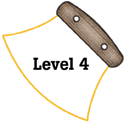
Alaska Science
Key Element B1
 |
Alaska Science |
|
Performance Standard Level 4, Ages 15–18
|
|
|
|
Sample Assessment Ideas
|
Standards Cross-References
|
||
|
National Science Education Standards Use technology and mathematics to improve investigations and communications. A variety of technologies, such as hand tools, measuring instruments, and calculators, should be an integral component of scientific investigations. The use of computers for the collection, analysis, and display of data is also a part of this standard. Mathematics plays an essential role in all aspects of an inquiry. For example, measurement is used for posing questions, formulas are used for developing explanations, and charts and graphs are used for communicating results. (Page 175) Formulate and revise scientific explanations and models using logic and evidence. Student inquiries should culminate in formulating an explanation or model. Models should be physical, conceptual, and mathematical. In the process of answering the questions, the students should engage in discussions and arguments that result in the revision of their explanations. These discussions should be based on scientific knowledge, the use of logic, and evidence from their investigation. (Page 175) Scientists rely on technology to enhance the gathering and manipulation of data. New techniques and tools provide new evidence to guide inquiry and new methods to gather data, thereby contributing to the advance of science. The accuracy and precision of the data, and therefore the quality of the exploration, depends on the technology used. (Page 176) Mathematics is essential in scientific inquiry. Mathematical tools and models guide and improve the posing of questions, gathering data, constructing explanations, and communicating results. (Page 176) Results of scientific inquiry–new knowledge and methods–emerge from different types of investigations and public communication among scientists. In communicating and defending the results of scientific inquiry, arguments must be logical and demonstrate connections between natural phenomena, investigations, and the historical body of scientific knowledge. In addition, the methods and procedures that scientists used to obtain evidence must be clearly reported to enhance opportunities for further investigation. (Page 176) |
Benchmarks Hypotheses are widely used in science for choosing what data to pay attention to and what additional data to seek, and for guiding the interpretation of the data (both new and previously available). (Page 13) Sometimes, scientists can control conditions in order to obtain evidence. When that is not possible for practical or ethical reasons, they try to observe as wide a range of natural occurrences as possible to be able to discern patterns. (Page 13) |
|
Table of Contents | Return to Alaska Native Knowledge Network